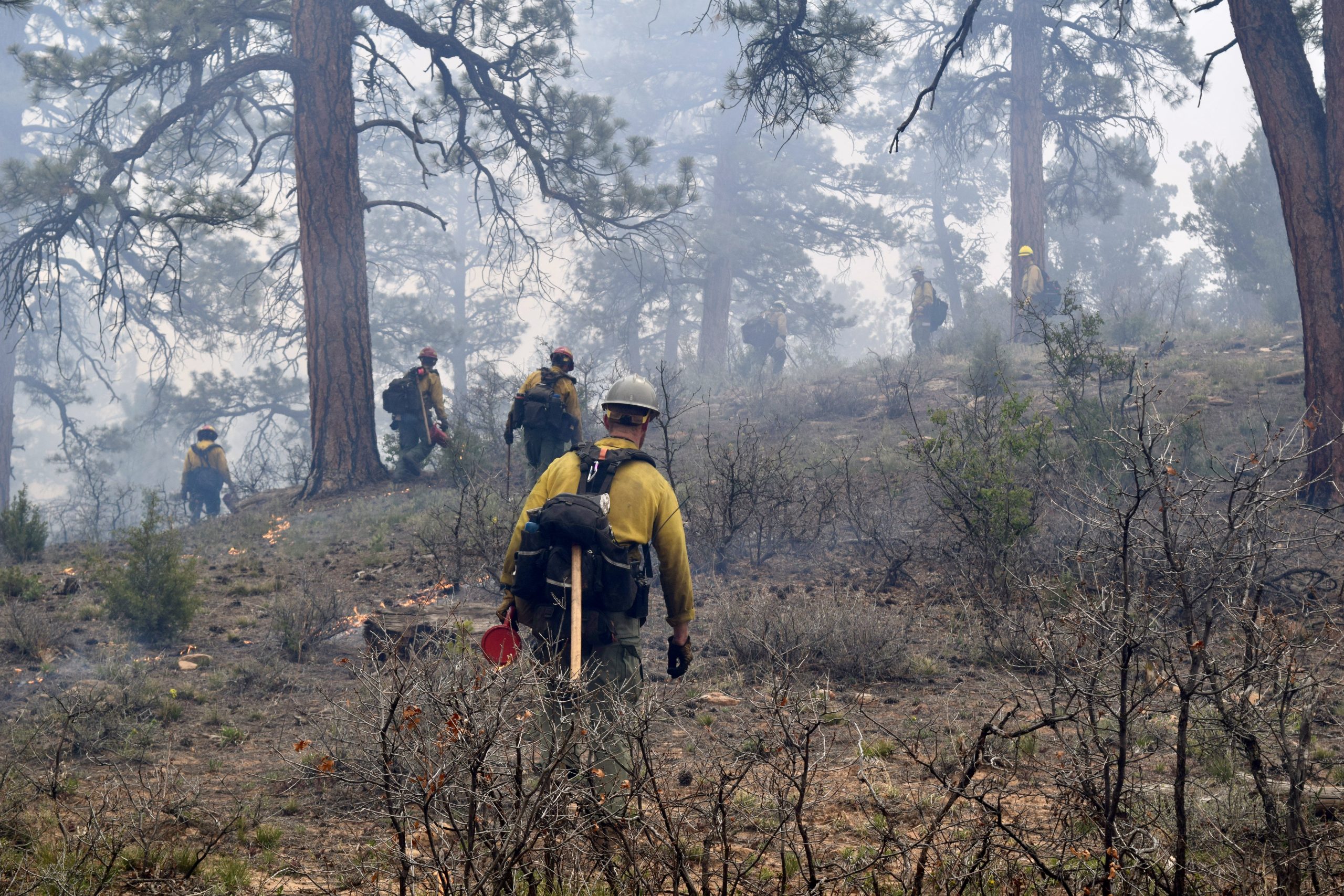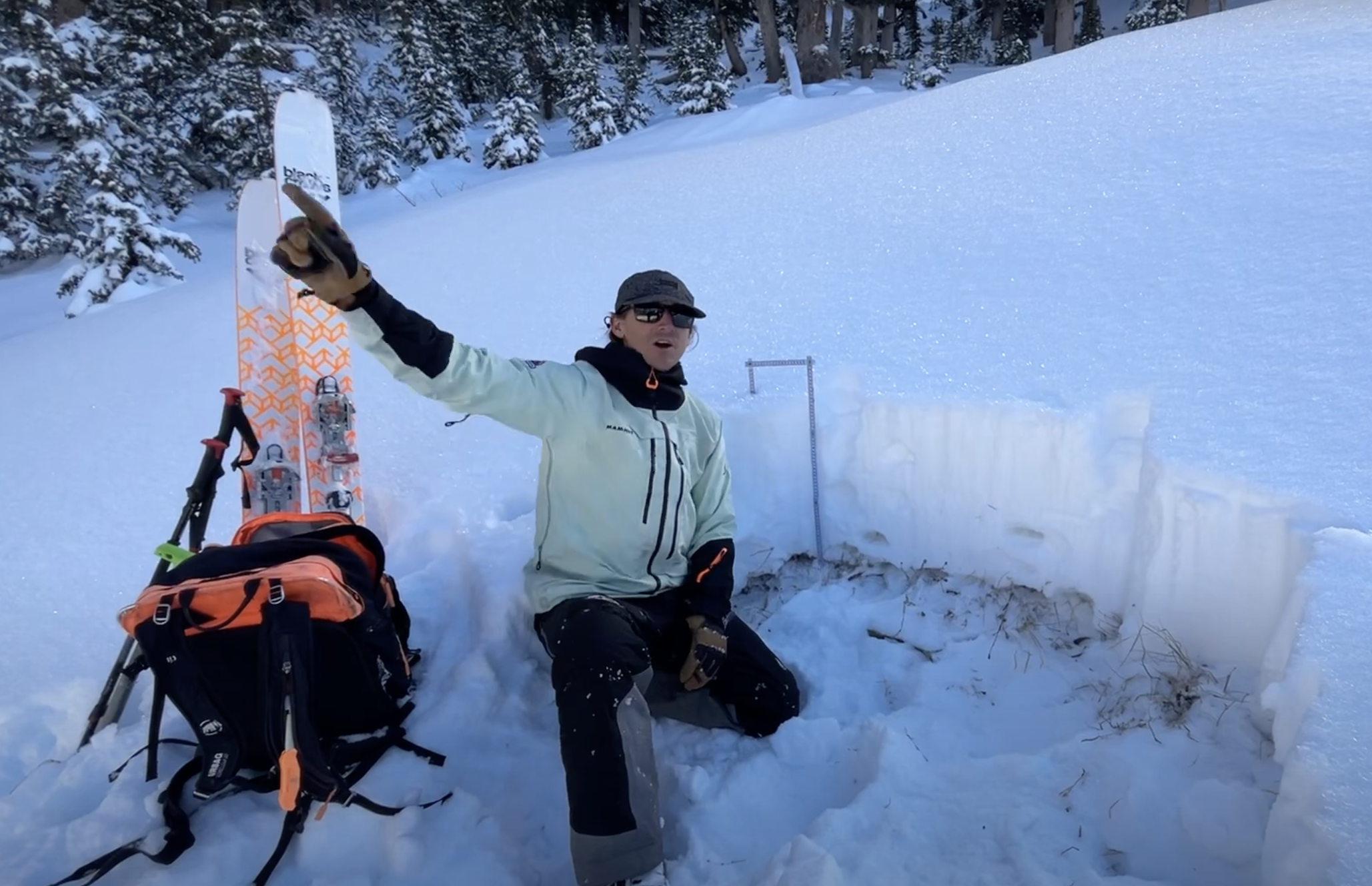Some information may be outdated.
On May 4, 22 fire personnel from the Bureau of Land Management and the U.S. Forest Service drove up the winding dirt road that leads from Highway 46 to Ray Mesa (also called Wray Mesa on some maps). They passed several houses and eventually followed a dirt two track through sagebrush and pinyon and juniper trees to reach a roughly 60-acre section of BLM land that’s home to one of the few old-growth Ponderosa pine stands in the Moab Field Office’s district.
By 9 in the morning, crews were at the burn unit prepared with their equipment. They each carry a pack with food and water for the day and an emergency fire shelter. Personnel also carry radios for communicating across the burn unit; hand tools for clearing the ground or brush; chainsaws for felling snags, if needed; drip torches to light the fires; and extra fuel for the torches and saws.

Prescribed burns are fires intentionally set and managed by land management agencies, and they can serve several purposes: they might be used to reduce a build-up of fuel and thus reduce the risk of intense wildfire; they might be used to maintain the health of fire-dependent or fire-adapted species; they can also alter vegetation patterns on the landscape to encourage the establishment of wildlife habitat.
BLM Fuels Program Manager Jason Kirks said the Ray Mesa burn achieves all of those to some degree, by supporting the health of the Ponderosa pines, reversing the encroachment of pinyon and juniper trees, and opening up habitat for deer, elk and other animals. Kirks said the BLM has aerial photographs dating back to the 1930s that illustrate how the pinyon and juniper trees have moved in under the Ponderosas and into sagebrush areas.
Ponderosa pines are a fire-adapted species. They don’t need wildfire to germinate, as some species do, but they do benefit from intermittent, low-intensity ground fires that clear out the understory to allow young trees to thrive; remove “ladder fuels” that can carry fire up into the crowns of trees; and add nutrients to the soil.
In a natural cycle, Ponderosa forests experience fire every 5-25 years, which clears out fuels in the understory. Before the West was colonized by European settlers, Native Americans used fire deliberately to manage the landscape, but by the early 20th century, United States federal policy was to aggressively suppress all wildfire. Natural fire cycles were interrupted and ecosystems changed; the resulting increase in fuels meant that when fires did get established, they often burned larger and with more intensity than if the natural fire cycle had been allowed to continue. When land management agencies began learning more about the importance of fire to ecosystems, they adopted the practice of prescribed fire.


Pine needles and sticks snapped and crackled like a campfire as crews lit ground fuels with the drip torches, which are used to drop a diesel/gasoline fuel mix onto vegetation and ignite it. White smoke drifted around close to the ground and spread into a haze in the air. Birds fluttered around and carried on chirping, apparently not alarmed by the creeping flames on the ground.
It takes a huge amount of planning to conduct a prescribed burn. There has to be a review according to the National Environmental Policy Act—that process was completed years ago for the Ray Mesa unit. Last fall, Kirks and his staff began preliminary planning to conduct the burn this spring. More focused planning took place during the two weeks prior—evaluating weather and fuel conditions and securing the staff needed to conduct the burn safely. BLM engine crews from Price and from Norwood, Colorado, as well as an engine crew from the Manti-La Sal National Forest, assisted the BLM with the burn.
BLM Fuels Program staff monitor the moisture content of plants to determine when they’re right for a prescribed burn. They can’t be too dry—that could facilitate a too-intense fire that might get out of control. Weather conditions must also be just right. It can’t be too hot, dry, or windy—conditions that would make fire too intense—but it can’t be too humid either, as that could prevent the fire from carrying at all.

The day of the Ray Mesa burn was overcast and the air was cool at the elevation of the unit— around 7,000 feet. Clouds hung over the mesa and kept the humidity high; an unexpected snow flurry arrived around noon.
The fire didn’t burn as energetically as Kirks had hoped. When the clouds lifted and a breeze picked up, the flames grew to a foot or two in length and moved briskly through the brush, but for most of the day they crept along at just a few inches in height, leaving the fuels only partially consumed. Ideally, Kirks said, the fire would consume all the fuels on the ground. Personnel returned the following day to try again, and had more success.
The Moab BLM Field Office has about 20 units with Ponderosa stands. Kirks hopes to get all of those units into a 10-year burn rotation, conducting one burn each spring and fall as conditions allow.
“We need fire on the landscape,” Kirks said.
Appreciate the coverage? Help keep local news alive.
Chip in to support the Moab Sun News.





